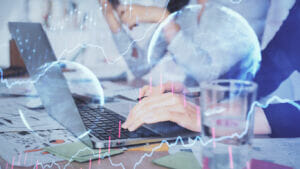The post-COVID-19 labor market has seen major changes, including a rise in job switches (job-to-job flows). This shift, driven in part by inflation and limited wage growth, reflects growing worker mobility and changing employment priorities.
LOCAL NEWS: 100 best places to work and live in Arizona for 2025
INDUSTRY INSIGHTS: Want more news like this? Get our free newsletter here
With this in mind, CommercialSearch’s newest study examines job-to-job flows across cities, industries, and age groups, providing a clear view of the evolution of the post-pandemic labor market.
- Phoenix boasted the third highest net gain of workers across the surveyed period. In 2023, some 128,637 workers left the city and its wider metropolitan area in search of a new job, while 137,964 moved in, resulting in a net job-to-job flow of 9,327 people.
- Interstate relocations show Los Angeles, Chicago, Seattle and Dallas as the main contributors of inbound workers in Phoenix.
- Phoenix’s inside flow (which refers to people switching jobs within the same city, without the need for a move) was the third highest in our ranking. 77% of those that changed jobs in Phoenix throughout 2023 did so without leaving the city.
- The industry sector that witnessed the highest percentage of total job flows across Phoenix was that of administrative and waste management services (16%), followed by accommodation and food services (13.4%), and retail trade (12.7%).
The post-COVID-19 labor market has undergone a series of significant transformations. Initially effected by the “Great Resignation,” the labor market shifted further as rising inflation rates compelled workers to actively seek higher-paying positions. Given that on-the-job raises and wage adjustments are typically small and infrequent, this economic pressure directly incentivized job switches, leading to a notable increase in job-to-job flow rates across various sectors.

The term “job-to-job flow” refers to the movement of workers directly from one employer to another without experiencing a spell of unemployment. It’s a key indicator of labor market fluidity and often reflects workers’ confidence in finding better compensation and working conditions. Of course, it’s worth mentioning that job switches might also be the result of personal needs and choices, rather than straightforward career advancement opportunities.
In any case, this study leverages comprehensive U.S. Census data to explore these dynamics through the lens of job-to-job flows across U.S. cities. Below, we provide in-depth insights into net flow data; analyze inside flow; and examine job-to-job movements across different age cohorts and specific industries to offer a granular understanding of the evolving post-pandemic labor market.
Key national findings:
- Decade-long nationwide job-to-job flows peaked in 2022, reaching 33 million switches
- Women are narrowing gap in terms of their share of national job-to-job flows
- Dallas & Houston boast highest gains in terms of net job transitions
- 80% of job-to-job flows in Las Vegas & New York were internal (no relocation involved)
- Young workers make up bulk of total job switches across U.S. cities
- Double-digit job-to-job flows in healthcare, hospitality, retail & administrative services




